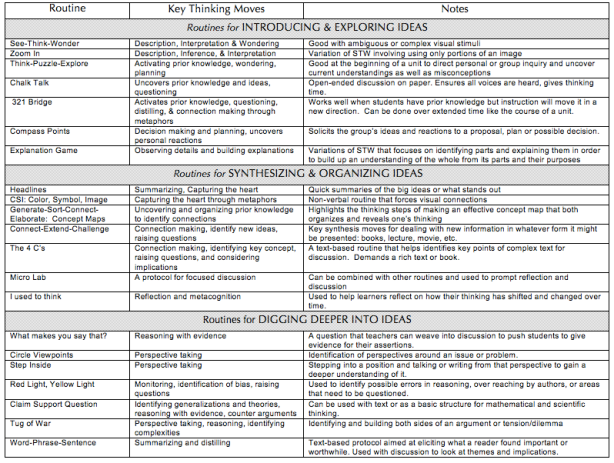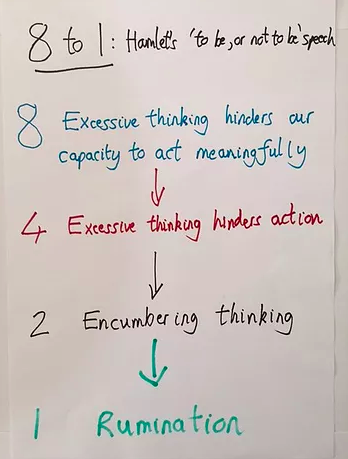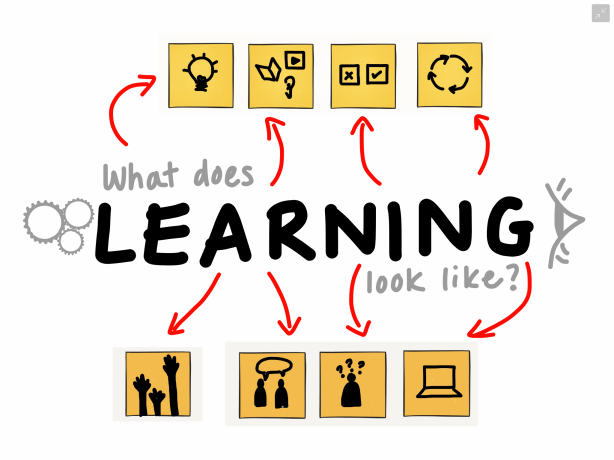
What does Learning Look like? Post it Crazy 8 thinking routine challenge by Nicki Hambleton
Think of a lesson you have been planning.
You might have spent hours putting together the most engaging lesson for your students: visuals and slides mapped out, handouts printed, you’ve planned fun and varied activities and you have probing questions at the ready.
You have taught this lesson a hundred times so you know the content well. But how will you know if your students have really understood and learnt anything?
What does learning actually look like?
I asked the same question to a group of educators at the Learning 2 conference, Warsaw back in April, where I was running an extended session called Learning and Thinking Out Loud through visual note taking and thinking routines. I used the simple routine Crazy 8, first demonstrated to me by Kelly Grogan and Ed Chang from the Chinese International School, HK at the iPad conference held at UWCSEA.
I explained that they would be drawing 1 idea per post it every 20 seconds (a feat most thought they would be incapable of, but weren’t!). Each idea drawn would represent what learning looks like. To show them what I meant, I drew a quick example:
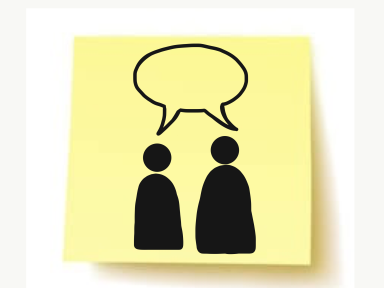
quick doodle for collaborative learning
At the end of the 3 minutes their ideas looked like this:
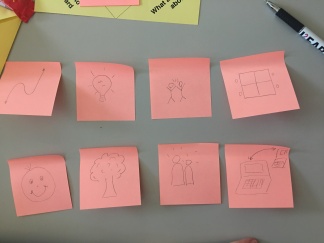
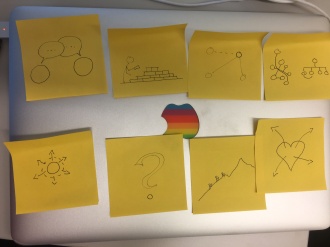
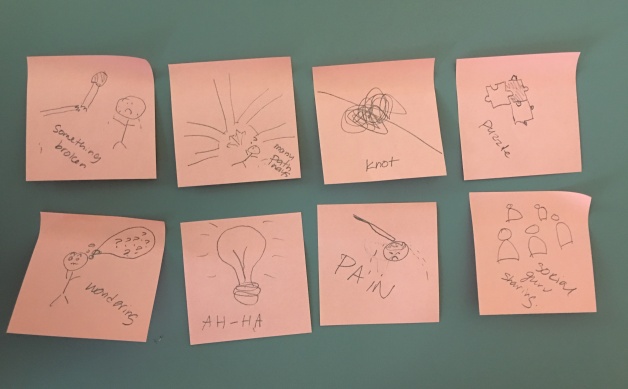
We shared thoughts and discussed what they had drawn with comments such as:
“Learning can be messy”, “Learning is never ending” and “Learning should be fun”.

Photo from Learning 2 conference, Warsaw, April 2017
What learning actually looks like and what it should look like can be quite different, but learning out loud, making it more visible and tangible can aid further discussion and understanding of that thought process.
What would you draw for What Learning Looks Like?
What alternative question might you ask in your classroom for students to draw their responses using the Crazy 8 thinking routine?
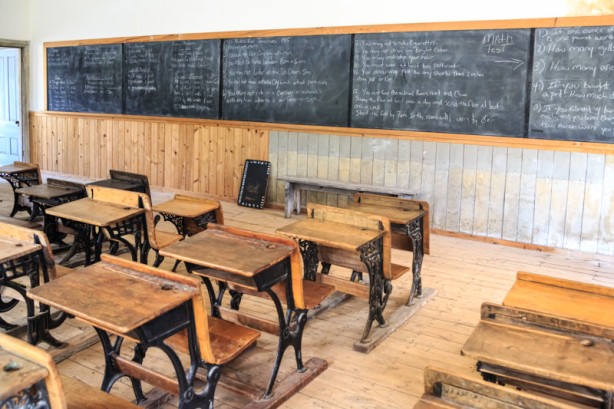
Photo Credit: Alan Vernon. Flickr via Compfight cc
When I was at school, learning was predominantly teacher led and all about listening, reading and writing, with exams at the end of the year. I don’t recall there being any student choice, collaboration or to that extent much fun, but that’s how it was.
In my classroom today, my students share that they are more empowered by autonomy and choice and, wherever it is possible, I try to include them in the planning process. But how do I know that they are learning or indeed, what they are learning?
You may be thinking that learning in Art is quite obvious as it is visual – a drawing, sculpture or painting. But how do I know whether they have truly understood the concept, the skill or technique? How do I know what is going on in their heads?
When learning only goes on only in one’s head we cannot see it, understand it or question it. We cannot track the thought process, probe into their thinking or push ideas in other directions. It is only when we get students to visualise their thinking that we can start to understand their processes, methods and see the way they work.
If you haven’t read the book “Making Thinking Visible” by Ritchhart, Church and Morrison or “Creating Cultures of Thinking” by Ron Ritchhart or devoured the resources on the website Project Zero and the Visible thinking routines, I strongly urge you to do so at you earliest convenience, I promise you will not regret it.
Project Zero began 50 years ago, led by a team of researchers including Howard Gardiner, discussing the cognitive skills needed for arts education and conceptual understanding through the arts.
You can find multiple, easy to use thinking routines through the website and many educators from elementary to high school use these to enhance and visualise thinking in their classrooms.
The best way to start is to choose just one routine and try it in different ways with different concepts and classes.
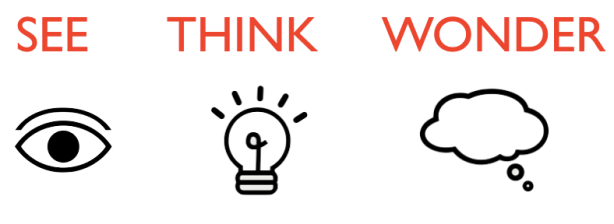
My most favoured routine is SEE THINK WONDER, which I use when introducing a new artist or art form such as installation art, when reflecting or giving feedback and when analysing or discussing artworks. During a discussion, it allows students to think more out loud, hear others ideas and to expand their own thinking. For Middle School art students it opens their minds at the start of a new unit and allows them to ask questions and wonder about the meaning or reason behind the artwork. In short, it gets them thinking more independently.
You can read more about the Making Learning Visible online course on their website and about UWCSEA’s group experience in a previous post of mine.
Recently I stumbled on a new routine, via Simon Brooks’ website called 8 to 1, where students whittle complex concepts into more manageable understandings, essentially by capturing it in 8 words, then 4, 2 and eventually down to one word:
1. If you were to write exactly 8 words that captured the heart of what should be remembered, what would those 8 words be?
2. Now that you have your 8, can you distill them down to 4?
3. And 2?
4. And 1?
5. REFLECT: Share your 8 words, your 2 words and your 1 word. How did your thinking change? What did you learn about what’s most important here?
Sharing their thinking seems to be at the heart of the routine and I see this as the most valuable learning experience for them. Brook posts a student example, below, relating to Hamlet’s speech but this routine could easily apply to IB Physics, HS Geography or MS Art.
How might you try out this routine in your class?
How could this help students to share their learning?
How does learning look different in other curriculum areas?
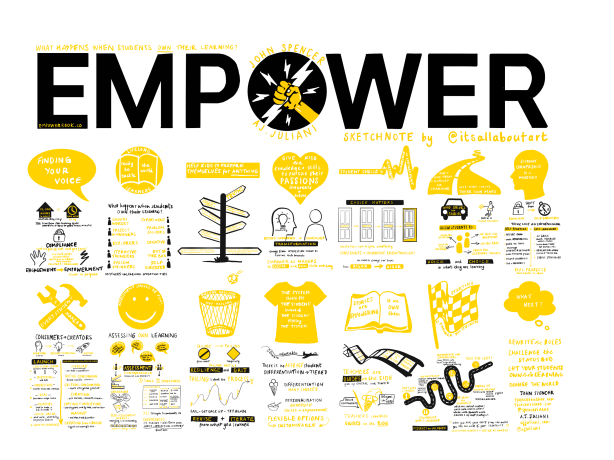
EMPOWER sketchnote by Nicki Hambleton drawn on iPad using Adobe Draw
Student choice is the heartbeat of ownership and empowerment
so what can we do to ensure this is integral in our students learning? How do you integrate personalised learning into your lessons?
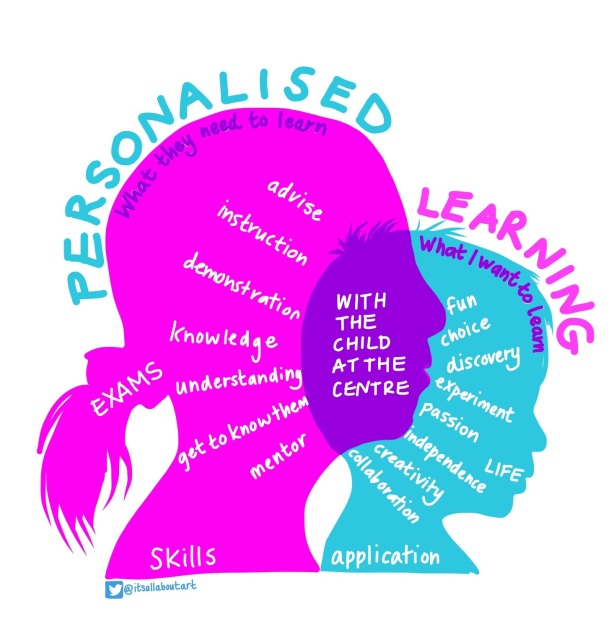
Personalised Learning visual note by Nicki Hambleton using Adobe Ideas on iPad
The book has certainly given me much food for thought here relaxing in Italy, sipping rich red Tuscan wine and munching on sweet succulent tomatoes and bruschetta.
What have you read this summer that has changed your thinking?
How can you embody the ideas in Empower to help students own their learning?
What does learning look like in your classroom?
One of my goals for the next academic year is to build students’ skills in self-directedness and, to help this process I have been investigating Hyperdocs as a strategy to guide students through the unit yet allowing them choice and time for personal progression. Hyperdocs are a possible solution to personalised learning using technology to gather multiple resources online.
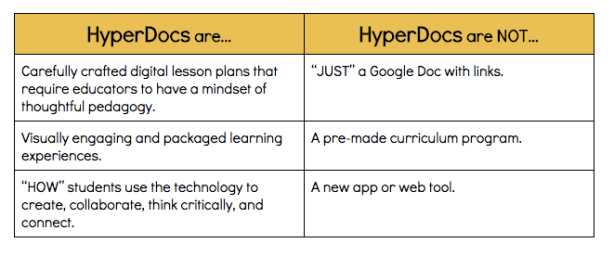
Hyperdocs.co
Hyperdocs, a transformative, interactive Google Doc replacing the worksheet method of delivering instruction, is the ultimate change agent in the blended learning classroom.
You can read more about Hyperdocs on Cult of Pedagogy or on the main Hyperdocs site. Have you used Hypedocs yet? How has this changed student learning?
I would love to hear about your experiences, challenges and thoughts on personalised learning, empowerment and any other ideas you have for making thinking more visible.
Please share your experiences and ideas in the comments below.
This blog post was a reflection of and in response to the powerful TED talk by Will Richardson “The Surprising Truth about Learning in School”.
